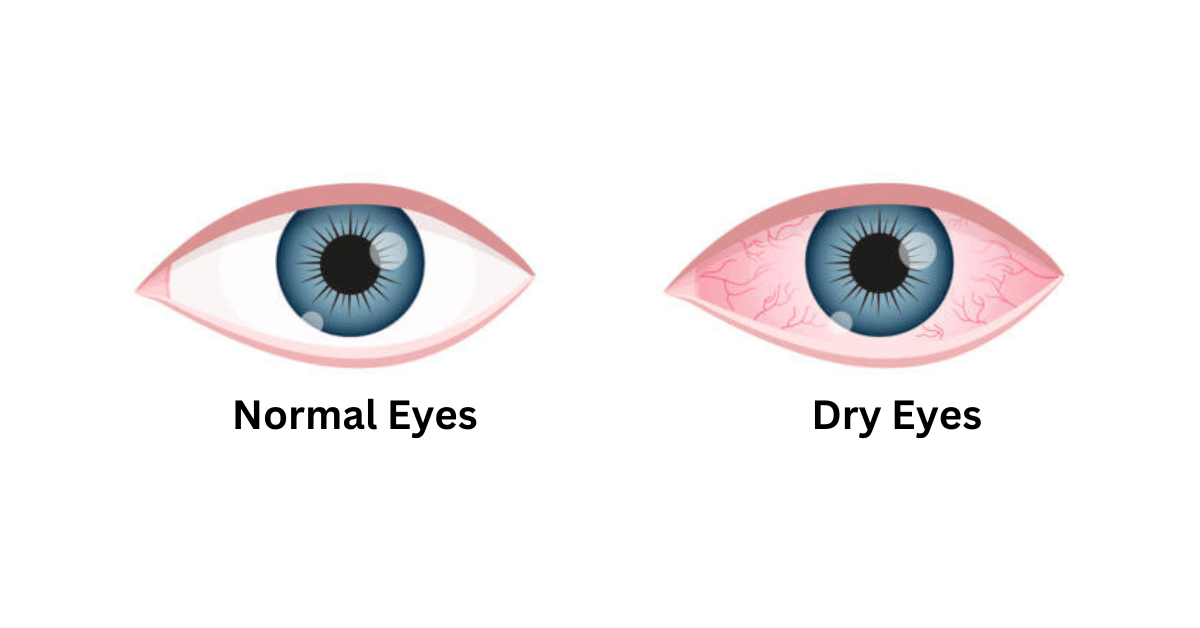People who work in workplaces these days, in the fast-paced digital world, frequently spend long hours riveted to computer screens, often in air-conditioned spaces that can be extremely harmful to their eyes.
What is dry eye?
Dry eyes are a common issue resulting from this contemporary lifestyle. Even though they may appear benign, dry eyes can cause pain, reduced productivity, and even long-term harm if left untreated. When there is not enough moisture on the surface of the eye due to either insufficient tear production or rapid evaporation, dry eyes result.
Factors Responsible for Dry Eyes
The following are some of the contributing elements to this painful condition:
Extended Screen Time: Blinking is necessary to spread tears evenly over the surface of the eye, and it is decreased when staring at digital screens for prolonged periods of time. This extended screen time might aggravate dry eyes and cause eye strain.
Air Conditioning: Dry indoor air produced by air conditioning units can speed up the evaporation of tears. This causes dry, itchy eyes, especially when blinking is decreased.
Bad Ergonomics: Poor ergonomic settings or improper screen placement might cause dry eyes. Screen placement that isn’t ideal for height or tilt might cause eye strain and alter the distribution of tears.
Allergies: Indoor air that is contaminated with dust, allergens, and other pollutants can cause eye irritation and dryness. One of the main causes of chronic dry eye is allergic conjunctivitis, which can be brought on by prolonged contact to pollution.
Contact lenses: Several causes, including decreased oxygen delivery to the surface of the eyes, disturbance of the tear film, evaporation, and alteration in the pattern of blinking, can result in dry eyes when wearing contact lenses.
Inflammation of glands within the eyelids: One of the most frequent reasons for draining dry eye is malfunctioning of the meibomian glands. The glands that create the outermost layer of the tear film are called meibomian glands, and they are found inside both the upper and lower eyelids. Prolonged inflammation causes chronic blockage, gland malfunction, and eventually death. This exacerbates dry eye syndrome, which is brought on by insufficient lipid layer formation in the tear film.
Also Read: How do I get rid of the bags under my eyes?
Preventing Dry Eyes
Treat Dry Eyes: Adhere to the 20-20-20 Rule: Every 20 minutes, take a break of at least 20-second and focus on something as far as 20 feet. This exercise helps your eyes to relax and promotes blinking.
Blink More Often: Try to intentionally blink more often, even when you’re focused on your work. Blinking keeps the eyes hydrated and revitalized.
Maximize Ergonomics in Workspace: To lessen glare, place your screen at eye level and change the lighting. An organized workstation can ease stress and lower the chance of developing dry eyes.
Maintain Your Hydration: Drink a lot of water throughout the day. Sufficient hydration preserves tear production and benefits overall eye health.
Employ a Humidifier: To give moisture to the air if the air conditioning in your office has made it too dry, think about utilizing a humidifier.
Handling Dry Eyes: When to Get Expert Assistance
Also Read: All about Squint, its causes and treatment
Treatment of Dry Eyes
Although precautionary steps are helpful, if your dry eye problems are bothersome, you should see an ophthalmologist. The Deevine Eye Care & Multispecialty Centre’s ophthalmologist can offer you individualized advice and suggest treatments based on your specific needs.
Among the available treatments are:
Synthetic Tears: Artificial teardrops available over the counter can help relieve eye irritation right away by enhancing the natural tear film in the eye.
Medications: In more serious situations, your ophthalmologist may recommend using drugs to lessen inflammation or assist produce more tears.
Lifestyle Modifications: To enhance eye health, your ophthalmologist may recommend particular lifestyle modifications, such as eating a diet high in omega-3 fatty acids and striking the right balance between work and relaxation.
For those with persistently dry eyes, the Deevine Eye Care & Multispeciality Centre offers procedures to reduce discomfort and enhance general eye health:
Our in-office treatments aim to address the underlying causes of chronic dry eye disease while relieving its symptoms. The best course of action for a patient’s needs and condition can be determined by speaking with a specialist. Seeing an eye professional on a regular basis is essential to identify any potential problems early on.
Conclusion
When working in an office environment, dry eyes are a typical complaint that is made worse by air-conditioned spaces and extended screen time. Although taking preventive steps can greatly lower the risk of developing dry eyes, consulting an ophthalmologist is essential for maintaining long-term eye health. You may have pleasant and productive workdays while protecting your priceless vision by adhering to a few easy strategies and scheduling routine eye exams.

